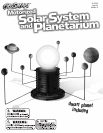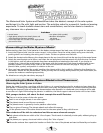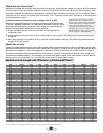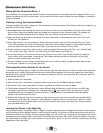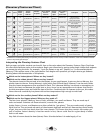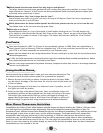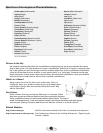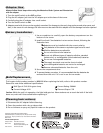
Northern Hemisphere Constellations
Andromeda (Andromeda)
Aquila (Eagle)
Aries (Ram)
A
uriga (Charioteer)
Boötes (Herdsman)
Camelopardus (Giraffe)
Cancer (Crab)
Canes Venatici (Hunting Dogs)
Canis Minor (Little Dog)
Cassiopeia (Cassiopeia)
Cepheus (Cepheus)
Cetus (Whale)
Coma Berenices (Berenice’s Hair)
Corona Borealis (Northern Crown)
Cygnus (Swan)
Delphinus (Dolphin)
Draco (Dragon)
Equuleus (Little Horse)
Gemini (Twins)
Hercules (Hercules)
Hydra (Water Monster)
Lacerta (Lizard)
Leo (Lion)
L
eo Minor (Little Lion)
Lynx (Lynx)
Lyra (Lyre)
Ophiuchus (Serpent Holder)
Orion (Orion/hunter)
Pegasus (Pegasus)
Perseus (Perseus)
Pisces (Fishes)
Polaris (North Star)*
Sagitta (Arrow)
Serpens (Serpent)
Taurus (Bull)
Triangulum (Triangle)
Ursa Major (Great Bear)
Ursa Minor (Little Bear)
Virgo (Virgin)
Pictures in the Sky
Ask students whether they think the constellations projected by the star dome resemble the names
they’ve been given. Tell each student to choose a constellation. What kind of figure or object do they
see in the pattern of stars? Encourage creativity: students might look at the constellation traditionally
called the Great Bear and see a skunk, a man waving hello, or a frying pan. Students should copy
down the pattern of stars, draw a figure around them, and name their constellation. Have your students
write stories and create histories around their invented constellations.
What’s in a Name?
Assign names from the list above such as Hercules, Orion, or
Cassiopeia. Have your students research and write about these
mythological figures. Who was Hercules? What did he do? Why
was he important?
Star Stories
Other cultures view the evening sky differently. For example, Native
American groups see different patterns than those previously discussed.
These constellations have rich stories and traditions behind them. This topic is
called “archaeoastronomy.” Have your students research the Lakota, the Navajo, and other groups
and compare findings. Research additional non-Western cultures in a similar fashion.
*not a constellation
Related Websites
http://www.nasa.gov/ NASA’s informative website with links for students and educators
http://www.nasm.si.edu/ceps/etp/ The Smithsonian’s National Air and Space Museum’s “Exploring the
Planets” website



